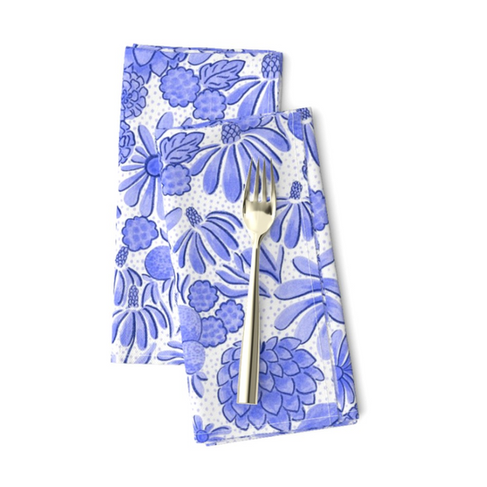Getting Started with Surface Pattern Design
- daphnevantine
- Feb 29, 2024
- 3 min read
Something I’ve become laser focused on this month is Surface Pattern Design. I’ve had my eyes on this practice for a while, and started making patterns about a year ago, but only recently had the tech to make them in a scalable and professional way (thank you Photoshop!)
So what is Surface Pattern Design? It’s essentially the process of designing patterns that can repeat infinitely and seamlessly on any surface - for instance on clothing, bedding, table linens, notebooks, you name it. I bet there are at least 10 things in your house right now that have patterns on them!
What I love about Surface Pattern Design is that it allows you to take art onto things commercially that a standalone painting or illustration can’t. And the applications really are limitless! As an artist, I see a lot of opportunity for me here. At this very moment, what excites me most is creating patterns for apparel and interior design. I want to see my designs on baby onesies, flowy sundresses, wallpaper, and table linens (among a million other things!)
My first pattern, Periwinkle Bloom, was originally created in my sketchbook using Tombow brush markers and Prismacolor pencils. I didn’t initially draw it with pattern specs in mind, so I had to do a substantial amount of work in Photoshop to get this looking how I wanted, and of course, repeating seamlessly.

Learning from the first experience creating Periwinkle Bloom as a repeating pattern, I wanted to test a different method for pattern creation. This one is a bit more analog, but one I felt would pay off time-wise in the editing phase. This process involves taking a piece of paper and painting your first elements on the page, but not crossing over the edge. You then cut the paper in half and later into quadrants and match the unpainted parts of the area to each other. You then tape them together on the back to create a seamless connection, and paint over those blank areas. Once you’ve painted all the parts of the paper you choose, you scan these pieces into your computer and line them up in Photoshop.




This method saves a lot of time in terms of moving elements around, because you’ve essentially already created your repeat. Now all that’s left is just editing some fine lines and making the tiles match up perfectly in photoshop.
Setting up my Spoonflower Shop
So how do I get my patterns out into the world and appearing on products? Now THAT is a question that keeps me up at night. However, there are certainly tools and platforms that make this process easier. One is Spoonflower, which is an online platform that allows you to purchase wallpaper, fabric and home decor items using designs uploaded by artists like me. Spoonflower is responsible for producing the items and fulfilling customer orders, and artists make a 10% royalty on products sold.
My shop is now live! I only have the Periwinkle Boom pattern up now (one small scale, the other large scale) but I plan to be regularly posting new designs there as my skills develop.
See below for mockups in different products and you can check out my Spoonflower shop here. Simply click on one of the designs, and then scroll down to see it available on different products like wallpaper, fabric and more. Everything you see below is also available for purchase (yay!) Spoonflower also has a wonderful blog if you’re looking for inspirational ways to use wallpaper and fabric at home. Please feel free to reach out to me if you have questions about which scale (large or small) makes sense for your project/item.
Interested in hiring me for a custom pattern? Feel free to get in touch!









Comments